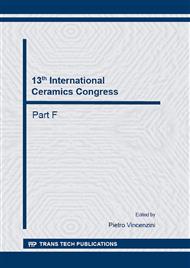p.248
p.258
p.264
p.272
p.282
p.288
p.294
p.301
p.310
Numerical Analysis on the Refractory Wear of the Blast Furnace Main Trough
Abstract:
This study aims to numerically analyze the refractory wear of the blast furnace main trough. The three dimensional transient Navier-Stocks equation associated with the volume of fluid (VOF) was developed to describe the flow fields of air, molten iron and slag in the main trough of the blast furnace during tapping process; and then solved by the finite volume method (FVM) subject to the pressure implicit with split operator (PSIO). Based on the Newton’s law of viscosity, the computed shear stress profile in the impingement region consists with the erosion rate of main trough from the no. 4 blast furnace at China Steel Corporation (CSC BF4). The influence of the tapping angle and the ratio of iron to slag in tapping stream on the wall shear stress of main trough was also examined for the suggestion to minimize the refractory wear of blast furnace main trough in this work.
Info:
Periodical:
Pages:
294-300
Citation:
Online since:
October 2014
Authors:
Price:
Сopyright:
© 2014 Trans Tech Publications Ltd. All Rights Reserved
Share:
Citation:


